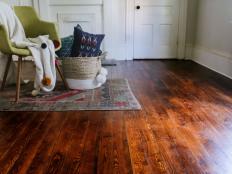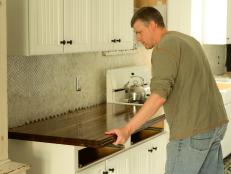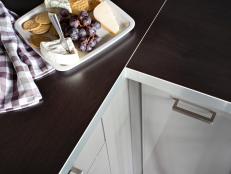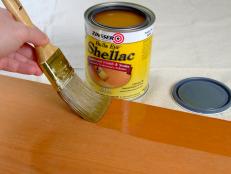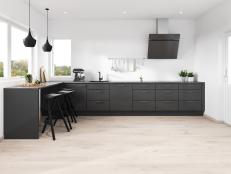Buffing vs. Sanding Hardwood Floors
If your hardwood floors are dull and in need of rejuvenation, you should consider whether buffing or sanding is the right approach. Here's how you can decide what you need to do.
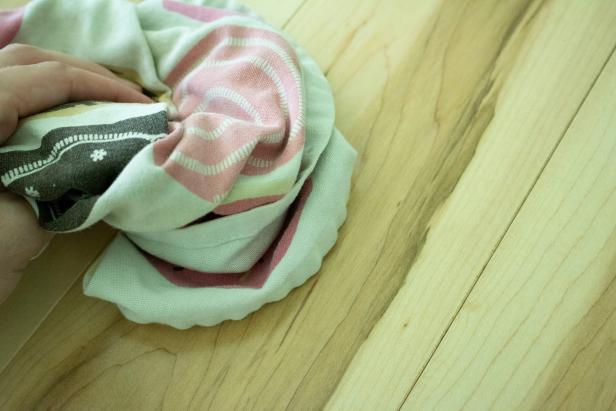
Emily Fazio
If your hardwood floors are in rough shape and need some revitalization, you may be wondering what the best method is to spruce them up. But “refinishing” your floor could involve one of several methods to get them back in the beautiful shape you want them to be in.
Buffing and sanding your floors are two main ways to rejuvenate them. These terms are not interchangeable. At a basic level, they’re ways of addressing wear and tear on different aspects of your floor.
Sanding
When you sand your hardwood floors, you use coarse sanding equipment to remove all of the finish and stain from your floors as well as smooth out the wood underneath those layers of stain and sealer. This is an intensive process that strips everything from the floor by grinding it down to the natural wood underneath all that shine.
Once the protective layers of sealer have been removed, you continue to sand the hardwood to remove any scratches, nicks or other imperfections. Typically, you would do this with a drum floor sander, a large piece of equipment you can rent from home improvement stores. You must sand the floor completely several times over with progressively finer sandpaper in order to make sure the floor is as smooth as possible before refinishing it. Once you’re done sanding, you can stain the floor again. After the stain has dried, the final step is to finish it off with a lacquer, polyurethane wood finish or alternative oil or sealer.
Buffing
Unlike sanding, which requires tackling the entire floor, you can buff only small areas of your floor if needed. For example, if you have a shallow nick or small scratch on your hardwood floor, you may be able to buff it out by hand without refinishing the entire floor.
Buffing mainly addresses damage and imperfections in the sealant layers protecting your hardwood floors. You may want to buff your floors instead of sanding them if the finish of the floor is looking dull and scratched. You can also buff floors made of other materials, like tile, to bring back their luster.
You can buff your floors either by hand or with stand-behind machinery you can rent from a home improvement store. Either way, it’s important to thoroughly clean your floor before getting started. Otherwise, dirt or dust could get stuck in the polish.
To buff out a small scratch in your floor polish by hand, rub brass wool over the damage until the scratch or ding has been leveled out and you can’t see it anymore. Then, re-polish the area by applying hardwood floor wax with a terrycloth towel and rubbing it into the area. Finish off by rubbing the area with a buffing pad to make it as shiny as the rest of your floor.
To buff your entire floor, rent a buffing machine from your local home improvement store. If you’ve previously polished the floor, remove the wax polish before getting started. Then clean the floor thoroughly and allow it to dry completely before you start the machine and begin buffing a new coat of polish into the floor.






